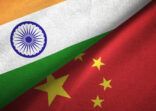Xiong co-manages the Goldman Sachs Global Strategic Macro Bond Portfolio, which is available for sale in Singapore.
The New York-based portfolio manager told FSA in a recent trip to Hong Kong that the firm believes a global economic shift will occur, driven by the shift from quantitative easing to fiscal policies centered on government spending, which gives rise to a stronger dollar and economic growth.
Since the financial crisis, central banks have been supressing market volatility by rolling out monetary policies, he said. As fiscal policy (government spending) is expected to be dominant in the new US administration, “it means that the Federal Reserve and monetary policies have to do less – the opposite of supressing the volatility”, which is not good for credit.
“We believe we’re at the end of the credit cycle. There’s a lot of leverage on US balance sheets and if volatility is going up, it’s traditionally bad for credits.”
There are also not enough defaults priced into the market, as well as risks to different sectors from as-yet-unknown US government policies, he added.
“There are a lot of risks, but the high yield and investment grade markets are pricing as if there’s no risks.”
He is therefore not targeting corporate credit products.
“We don’t see the risk/reward is there, although we continue to see the phenomenon of yield hunting by clients. From my understanding there are a lot of private investors in Europe and Asia sitting on a significant amount of credits.
“I wouldn’t necessarily say it’s a bubble, but [these assets] will definitely be repriced relative to other risk assets in the market today. The valuation is not justified given where we are in the credit cycle.”
However, volatility creates opportunities in mispricing, he said. For instance, there is a high risk premium built into the Mexican peso as tensions with the US on immigration and trade issues rise, he said.
“We’d argue that China is exposed to similar types of trade wars with the US, but there’s no big risk premium built in Asia,” he said, adding that the portfolio is shorting some of Asian currencies.
GSAM’s process
His fund has an absolute return strategy that seeks returns uncorrelated to other asset classes by trading mainly interest rates, currencies and agency-backed mortgages with the use of derivatives.
Xiong explained that within GSAM’s fixed income space, the portfolio managers are specialised in risk factors and asset classes.
“If you buy a US treasury, we don’t think about that like a bond, but that you are exposed to duration risk, country risk and currency risk.”
For the absolute return strategy, everything is dissected into market neutral or very specific risk factors. “My job at the top is to size how big each of these active views should be,” he said.
The manager looks at relative value across different countries and asset classes, and buy/sell calls will be made once the trades revert to fair valuation or there’s some fundamental changes to the markets.
Ongoing charges (OCF) are 1.25% as of last June, with a 10% performance fee on positive returns. The fund’s turnover rate is high at about 6-8 times per year.
The fund outperformed its benchmark, the 3-Month LIBOR, as well as FE’s Singapore hedge fund and structured product category average over the trackable period starting October 2014, according to FE data.
















